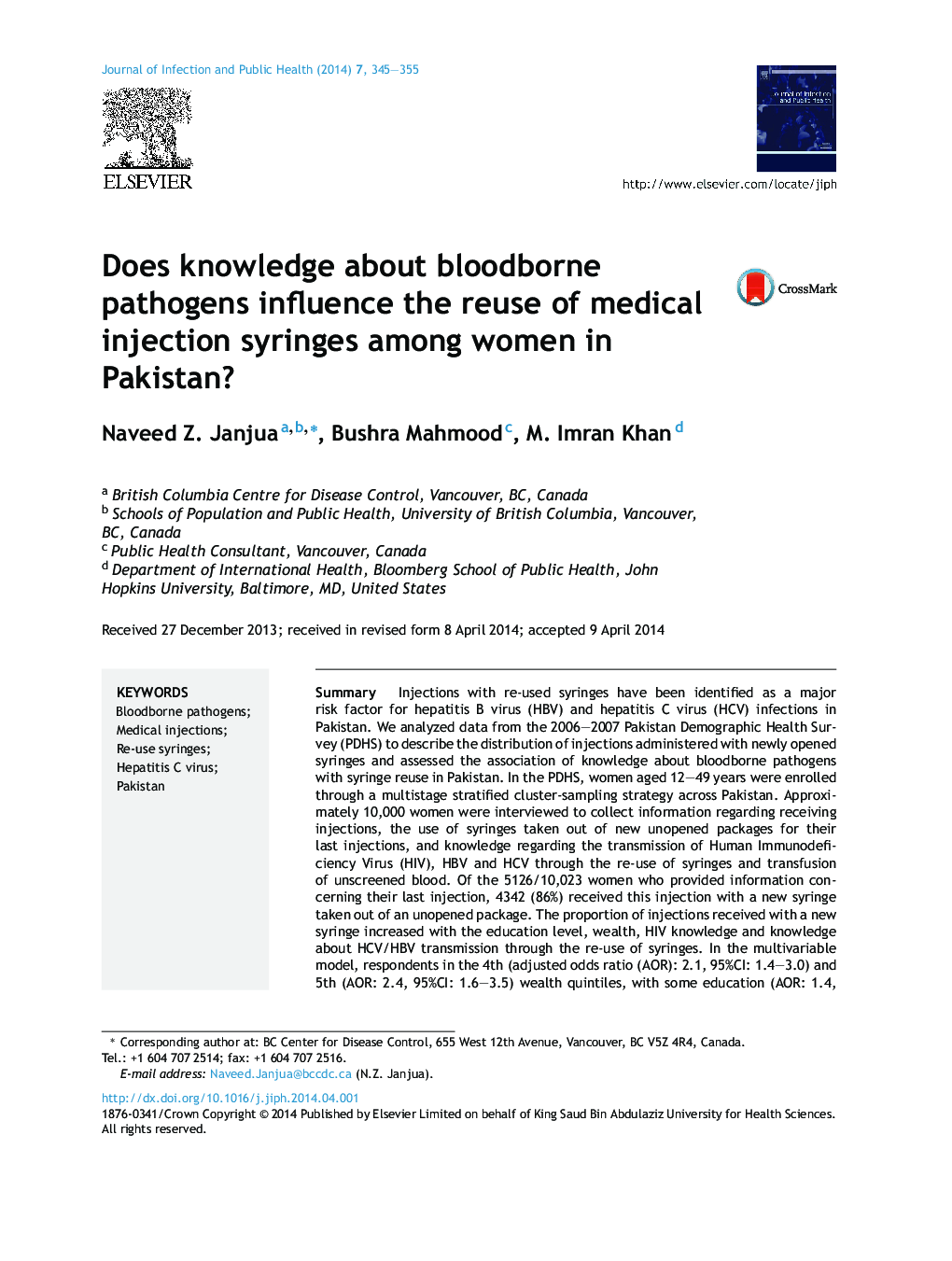| کد مقاله | کد نشریه | سال انتشار | مقاله انگلیسی | نسخه تمام متن |
|---|---|---|---|---|
| 3406202 | 1223509 | 2014 | 11 صفحه PDF | دانلود رایگان |
SummaryInjections with re-used syringes have been identified as a major risk factor for hepatitis B virus (HBV) and hepatitis C virus (HCV) infections in Pakistan. We analyzed data from the 2006–2007 Pakistan Demographic Health Survey (PDHS) to describe the distribution of injections administered with newly opened syringes and assessed the association of knowledge about bloodborne pathogens with syringe reuse in Pakistan. In the PDHS, women aged 12–49 years were enrolled through a multistage stratified cluster-sampling strategy across Pakistan. Approximately 10,000 women were interviewed to collect information regarding receiving injections, the use of syringes taken out of new unopened packages for their last injections, and knowledge regarding the transmission of Human Immunodeficiency Virus (HIV), HBV and HCV through the re-use of syringes and transfusion of unscreened blood. Of the 5126/10,023 women who provided information concerning their last injection, 4342 (86%) received this injection with a new syringe taken out of an unopened package. The proportion of injections received with a new syringe increased with the education level, wealth, HIV knowledge and knowledge about HCV/HBV transmission through the re-use of syringes. In the multivariable model, respondents in the 4th (adjusted odds ratio (AOR): 2.1, 95%CI: 1.4–3.0) and 5th (AOR: 2.4, 95%CI: 1.6–3.5) wealth quintiles, with some education (AOR: 1.4, 95%CI: 1.1–1.9), those in the 4th quartile of the HIV knowledge score (AOR: 1.5, 95%CI: 1.1–2.0), and those with the knowledge that a new syringe protects against HCV/HBV and HIV (AOR: 2.3, 95%CI: 1.5–3.5) were more likely to receive injections with a newly opened syringe. The patients’ knowledge regarding the transmission of bloodborne pathogens is an important factor in receiving injections with a new syringe.
Journal: Journal of Infection and Public Health - Volume 7, Issue 4, July–August 2014, Pages 345–355
